Salami is something that is ‘cured’ but how long it lasts does vary quite a bit, I’m going to go over all I have discovered about this ancient craft over the years.
Delving into the world of cured meats, it would be realistic to imagine that these items tend to last longer than their fresh counterparts, especially how long salami lasts.
The whole dry-cured salami is preserved and will continue to dry. When refrigerated, it will become harder and drier. According to the USDA, it can last about six weeks when unrefrigerated. However, cut salami lasts about 1-3 weeks in the refrigerator.
Summary:
- Salami’s longevity varies based on whether it’s whole or cut and how it’s prepared.
- Whole dry-cured salami can last longer than cut salami, typically about six weeks unrefrigerated, according to USDA.
- Cut salami lasts 1-2 weeks in the refrigerator.
- Salami’s shelf life is mainly due to salt and acidity preservation, it varies greatly.
- Oxygen exposure affects salami, causing discoloration and spoilage, particularly in cut salami.
- Sliced salami’s longevity can be extended by avoiding direct light exposure and using N2 packaging.
- Dry-cured salami (I wrote about different salami ideas also for pizza types) can last months if stored properly, while cooked salami has a shorter shelf life.
- Signs of spoiled salami include gray edges, black fuzz, foul odors, and abnormal texture.
- White mold on salami is typically harmless but should be removed before consumption if present.
Some salami are not fermented and dried for preservation. Often rapid acidification is used; once the plastic is removed from this type, it will last 1-2 weeks in the fridge.
They are, after all, created in such a way that they have a longer shelf life and, therefore, a longer shelf life when placed within your pantry. However, all good things must come to an end.
The longevity is mainly due to salt and acidity, not all salami are made the same – there are literally thousands of variations.

For those everyday grocery shoppers, cut, and whole salami must be understood a bit differently before buying. Read below to learn why this is so important and how you can navigate this remarkable entity of cured meats.
There is also dry-cured salami vs. cooked/smoked salami – I’ll elaborate on this as well.
Salami & How Long It Lasts
Oxygen is a blessing and a curse when it comes to food.
Salami is no exception to the effects of exposure to oxygen in the realm of cured meats- especially cut salami. Oxygen can wiggle itself into this fantastically salty treat and contort its composition into something discolored and more easily soiled. For the whole salami, it is drying out for cut salami, it starts to spoil it much quicker.
When picking up your sliced salami (different salami suit different pizza styles too, I wrote about this here), you want it to have that nice pink coloration to it – a sign of healthy meat, good Artisan slow-fermented salami might get a bit darker as it dries a little.
Here is an example of this:
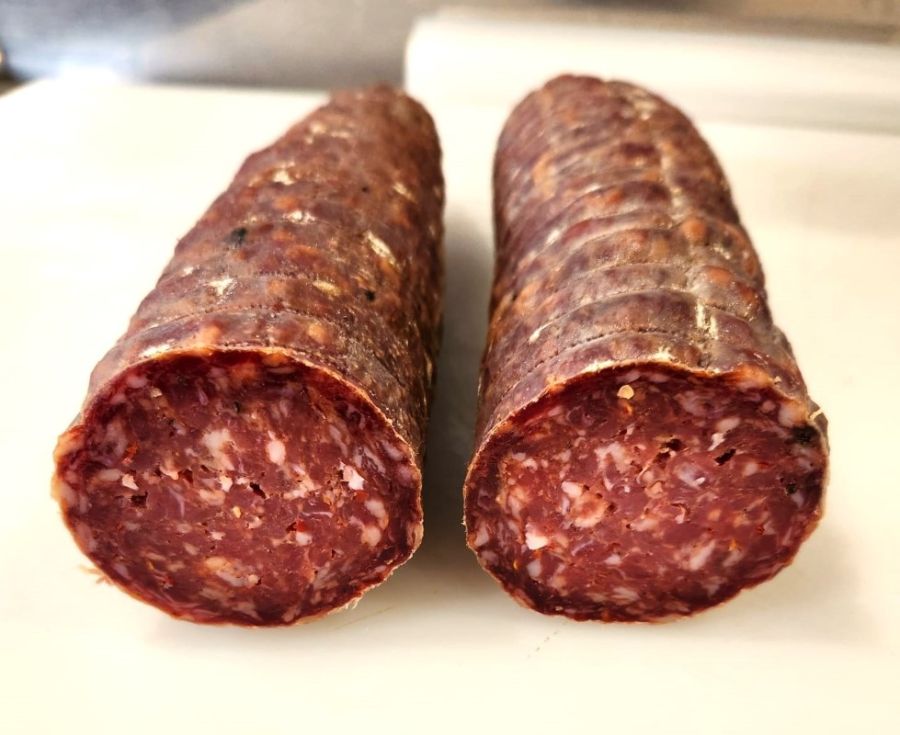
Another example of well-made, tasty dry-cured salami:
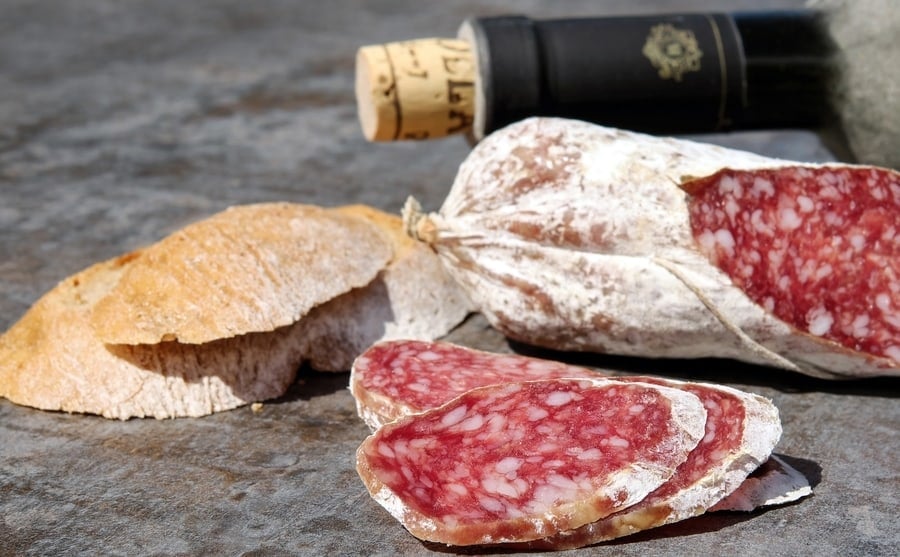
As it seems, cut and whole salami are backed with different standards regarding their longevity. However, both offer a wide range of flavors and different amounts of accessibility when in a rush to get appetizers on the table.
However, many times, you can find sliced salami that has a more grey or brown color to it making customers leary of tossing the product into their cart.
This discoloration is caused by the combination of residual O2 within the package and the penetration of light from display cabinet cases.
For most commercially made vs. craft Artisan-style (or homemade)
Lighting also plays a role in sliced salami’s longevity. When sliced salami is exposed to light over time, photooxidation occurs and takes away the typically pinkish-red hue of salami and turns into something duller and less visually appealing.
You will find this with all kinds of fresh meat that has been sitting under certain lighting in a display cabinet.
Some commercial salami is made in a matter of a few days; it is not dried and preserved. It’s mainly a fast acidic pH drop that makes the salami (if we can call it that) ready for consumption.
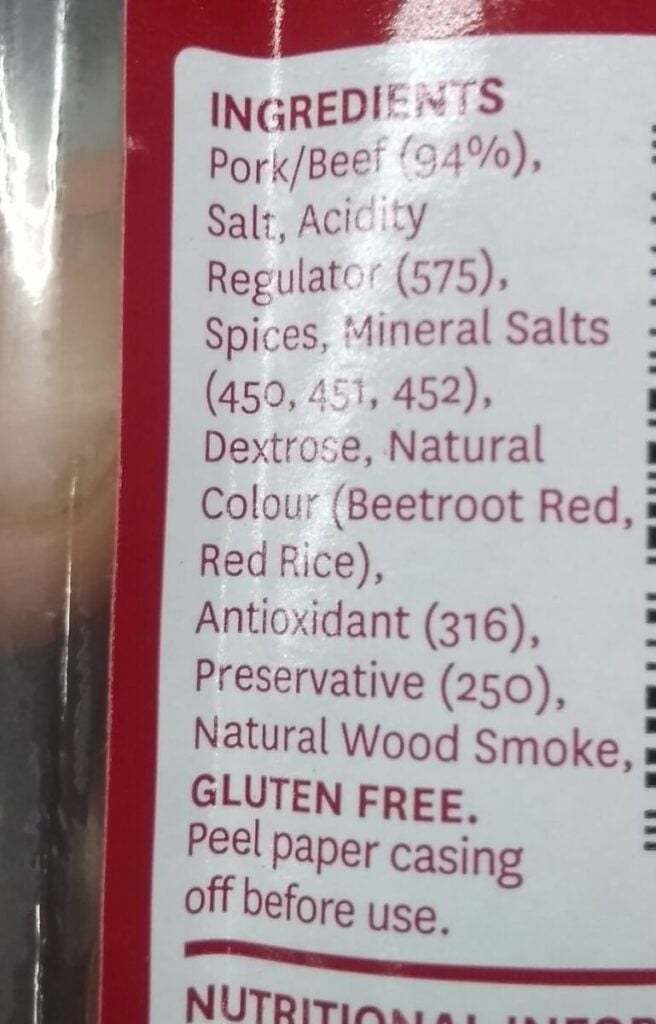
Ways to Avoid Salami Exposure to Oxygen
Although not so applicable with whole salami because its structure is not changed by cutting, there are a few options to help reduce cut salami exposure to oxygen to create a longer shelf life while also making sure the product stays fresh.
A few of the top ways to avoid salami exposure to oxygen is by removing sliced salami from direct overhead light exposure.
Salami not under that bright white light might hold up better; refrigerated display case without lighting, and moving the salami to a dark location.
Instead of the usual vacuum-sealed packaging or airtight sealing processes, N2 packaging has presented a new way of packaging items that helps to extend the shelf life of various food products while also maintaining the utmost freshness.
N2 packaging is a system that uses hermetic sealing, which is a process that replaces air and moisture with nitrogen to keep oxidation processes from affecting, in this case, the cured meat.
Oxygen is tough to work with for many foods because it naturally hosts the ability to break down foods, which can lead to spoilage. Nitrogen, however, can cover an extensive range of different foods and the various ways they spoil by replacing the breathable atmosphere that oxygen creates and replacing it with one that does not allow rapid bacterial growth.
All over Europe, with more traditionally made products, they often have Salami I have seen just sitting in baskets on tables across supermarkets (especially in Italy of course).
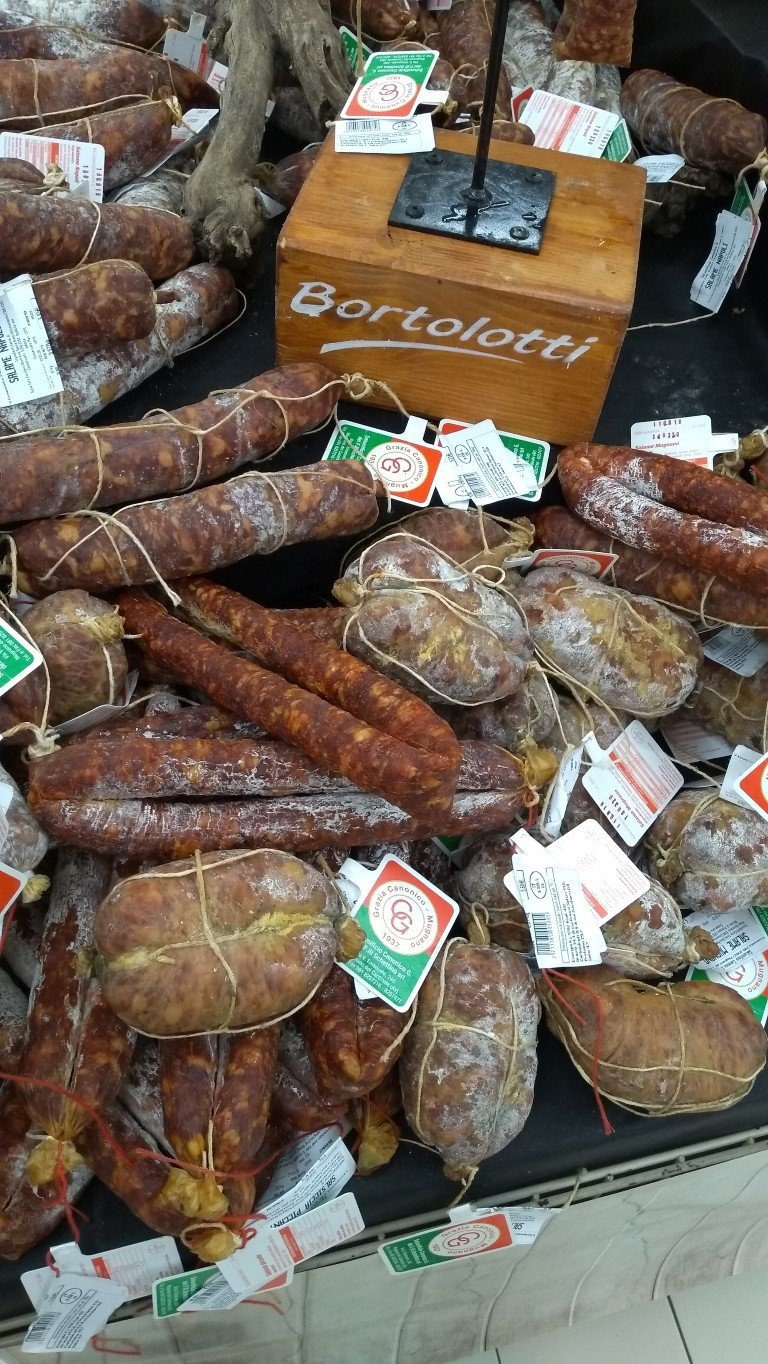
Dry-cured salami vs. Hot Smoked (Cooked) salami
To visualize this information here is these two different types of salami.

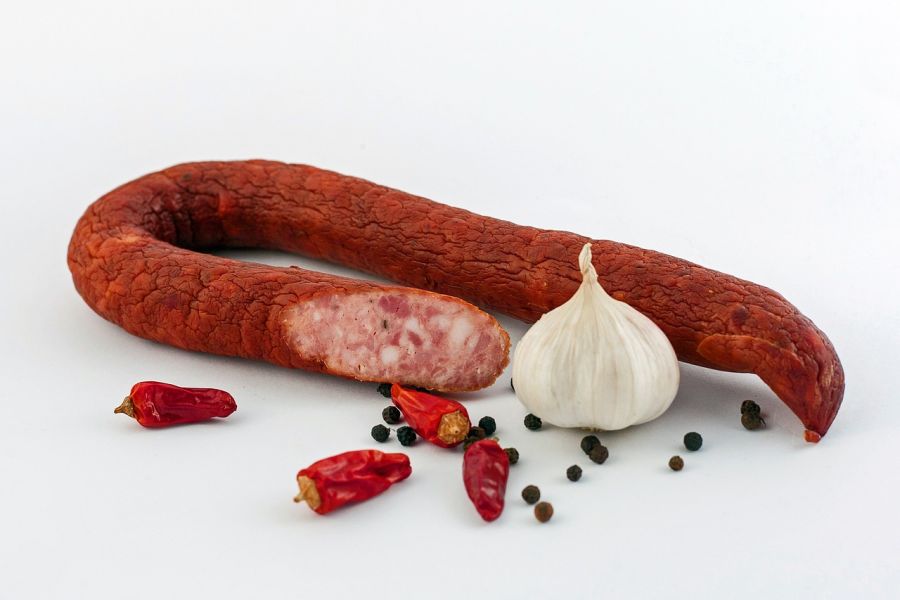
Salami can be dry-cured (a more traditional way of preserving with spices and a curation process that aids its longevity) or hot-smoked (cooked).
When cooked, a salami will be treated as other types of meat, as the curation process becomes less important.
Dry-cured salami (before being cut and exposed to oxygen) can last for some time, like months, until it gets so hard it’s not so nice to eat.
Artisan or Homemade Dry Cured Salami (many meats can be used for salami) can be hung at a moderate temperature.
How to Tell if Salami Has Gone Bad
With cured meat like salami, it can be a bit trickier to decide whether or not you can gobble it up or if it needs to head to the trash.
You can tell that salami has gone bad when it has gray edges, black fuzz, or other common signs of discoloration and change in appearance.
Smell is the most important factor.
Additionally, spoiled salami will give off the smell of ammonia, rotten eggs, and other foul odors.
Depending on its preparation, spoiled salami can also have a strange texture, like excessive hardness or sliminess.
The white powdery mold on the outside should have an earthy mushroomy smell – this is penicillin!
With fresh (dried and cured) salami having a nice healthy reddish-pink color when sliced, one of the biggest signs that the product has gone bad is gray edges. If the edges have turned gray, go ahead and toss the product.
Black fuzz, along with any other obvious molds present on your product, is also a sign of spoiling.
However, be mindful of any white molds that you see on salami. As it turns out, this sort of mold naturally occurs and is not harmful if consumed. Still, if you see it encroaching on your snack, just swiftly remove it and continue enjoying.
If it looks fishy, trust your instincts and weigh your risk and reward to avoid consuming a spoiled product.
Trusting your senses is key; we were given these instruments to detect foods that aren’t any good anymore!
Texture can also be a great indicator of spoiled salami. If it is slimy or has hardened beyond a normal range, it is best to leave it behind. Just as you would trust your gut, trust your nose to give you the green light when treating yourself to a salami snack.
Beyond the writers personal experiences of making, teaching, and buying salami, another resource was used.

Tom Mueller
For decades, immersed in studying, working, learning, and teaching the craft of meat curing, sharing the passion and showcasing the world of charcuterie and smoked meat. Read More
